Everything You Need To Know About Akhnoor Fort To Visit In 2025
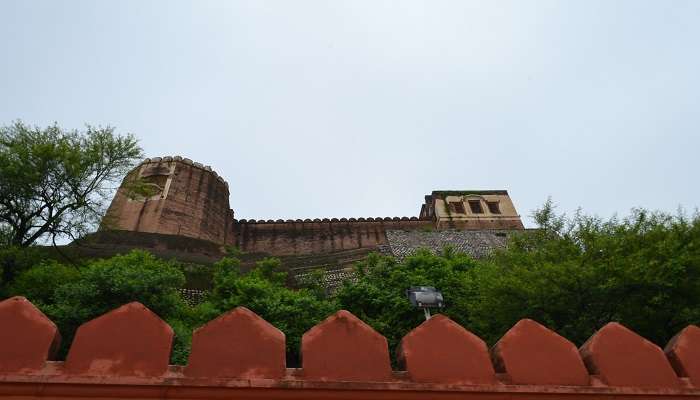
The historic Akhnoor Fort, tucked away amid Jammu and Kashmir’s stunning scenery, is a monument to the area’s rich past and architectural wonders. Situated on a hillside, this magnificent fort has seen the rise and fall of many dynasties and is home to legends of bravery and conquest. Akhnoor Fort, which dates to the eighth century AD, has withstood the test of time with its majestic walls and dexterous carvings, inspiring amazement and admiration. Fort Worth is renowned for its advantageous position and strong fortifications, and it has been instrumental in forming the region.
Akhnoor Fort: An Overview
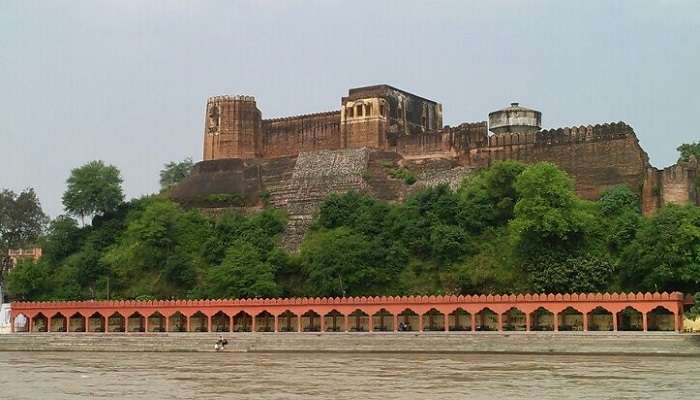
Situated on the right bank of the Chenab River, approximately 28 Km from Jammu City, is the old Akhnoor Fort. Raja Tegh Singh began building the fort in 1762, and Raja Alam Singh completed it in 1802. The fort features towers spaced regularly apart and high walls. At each corner of the fort are two-story watchtowers. The fort is divided in half by a wall, and a gate leads to a palace on the south side. The palace is a two-story structure with mural paintings and arched wall decorations. The north or the riverbank are the two entrances to the Akhnoor Fort.
Despite having been partially demolished in the past, the fort has been saved because of conservation efforts. 1982 it was declared a National Monument under Indian law, and the Archaeological Survey of India now manages it.
Must Read: Places To Visit In Udhampur
Akhnoor Fort History

The Akhnoor Fort’s history dates back to 5000 years. It stands atop an ancient site known locally as “Manda.” Archaeological excavations at this site have unveiled three distinct cultural periods. The first period is linked to the Harappan civilisation, as indicated by the discovery of red and grey pottery, including various artefacts such as jars, dish-on-stand beakers, goblets, copper pins, bone arrowheads, terracotta cakes, and sherds with Harappan graffiti.
The second period features early historic pottery, suggesting a cultural shift among the inhabitants. The third period showcases objects from the Kushana era, including impressive walls built using rubble diaper masonry. These walls, which line a 3-meter-wide street, offer a glimpse into the urban structure of the past civilisations that once flourished here. This rich history makes the Akhnoor Fort a fascinating site for history enthusiasts and tourists alike.
Akhnoor Fort: Design and Architecture
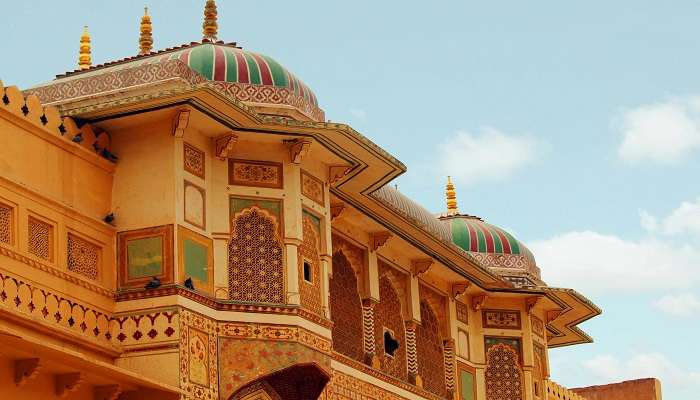
Akhnoor Fort stands as a testament to both military might and regal beauty. This two-storied structure exemplifies fine Indian military architecture. Its most striking feature is the imposing facade. High fortification walls run along the perimeter, punctuated regularly by bastions that provided crucial vantage points for defenders. These bastions and the two-storeyed watchtowers at the corners are crowned with battlements and merlons, a classic defensive measure that helped deflect enemy attacks.
The fort’s design also incorporates a strategic division. An internal wall separates the main fort area from the southern section, where the grand palace of Raja Alam Singh resides. This palace is a marvel, boasting two stories and showcasing a beautiful courtyard. The walls facing this courtyard are adorned with elegant arches, some of which hold the key to the fort’s past – exquisite mural paintings. The fort was also cleverly designed to allow access from multiple points, including the northern entrance and the banks of the Chenab River on either side, highlighting the various ways defenders could enter or exit the fort depending on the situation.
Suggested Read: Places To Visit In Patnitop
What are the Nearby Places From Akhnoor Fort?
There are several places near Akhnoor Fort that you must add to your list of must-visit places. They are:
1. Raghunath Temple, Jammu
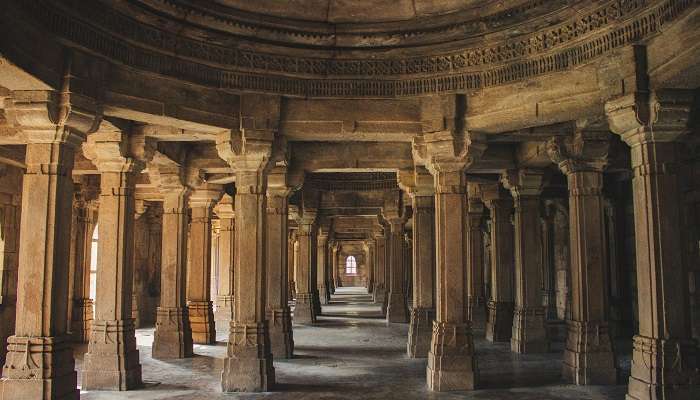
The Raghunath Temple in Jammu is a prominent Hindu place of worship. It was built by Maharaja Gulab Singh, the first Dogra ruler, in 1835 and completed by his son, Maharaja Ranbir Singh, in 1860. The temple complex consists of seven shrines dedicated to Hindu deities, with Rama, also known as Raghunath, an incarnation of Vishnu, being the main deity. The temple is decorated with 300 beautifully crafted icons of various gods and goddesses. Additionally, the temple grounds house a school and a library that holds over 6,000 manuscripts in several Indian languages.
2. Amar Mahal Museum
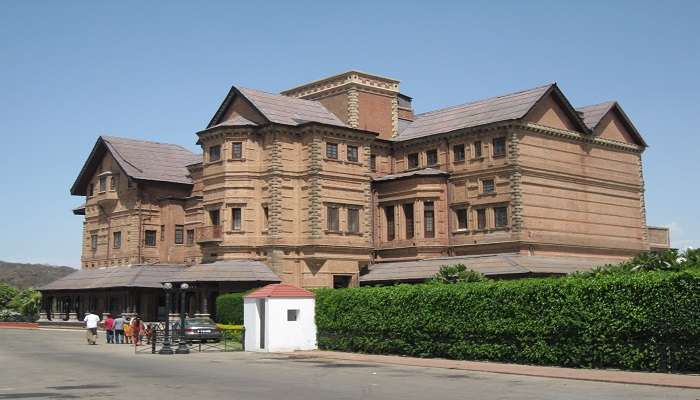
The Amar Mahal Museum, situated in Jammu, India, is a historical gem. This 19th-century palace, once the abode of Dogra King Raja Amar Singh, was crafted by a French architect and mirrors a French chateau. The museum is home to an array of artefacts, including a 120 kg golden throne, Pahari and Kangra miniature paintings, and a library housing 25,000 antique books. It also exhibits a vast collection of royal family portraits. The Hari-Tara Charitable Trust manages the museum.
Suggested Read: Things To Do In Kashmir
3. Ranbireshwar Temple
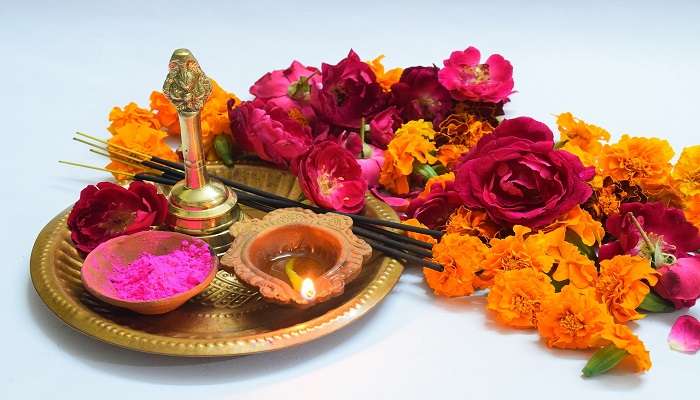
Situated on Shalimar Road in Jammu, Ranbireshwar Temple is a renowned ancient sanctuary devoted to Lord Shiva. Established by Maharaja Ranbir Singh in 1883, it’s recognised as North India’s biggest Shiva temple. The temple is home to an 8-foot-high Shiva lingam crafted from black stone, the tallest in India. It also houses 12 crystal shillings and galleries adorned with 1.25 lakh bona lingam from the Narmada River. The temple is embellished with magnificent Ganesha, Kartikeya, and Nandi Bull statues
4. Vaishno Devi

Vaishno Devi, often referred to as Mata Rani, Trikuta, and Vaishnavi, is an embodiment of the Hindu Goddess Durga. Located in the Trikuta Hills of Katra in Jammu & Kashmir, the shrine venerates the three avatars of Goddess Durga: Maha Kali, Maha Saraswati, and Maha Lakshmi. As one of the 108 Shakti Peethas, it holds immense religious significance among Hindus. The temple is perched at 5200 feet, and devotees undertake a 13 km trek from Katra to reach it. Every year, the temple witnesses a footfall of millions of pilgrims seeking divine blessings.
Suggested Read: Shopping In Jammu
Best Time To Visit Akhnoor Fort
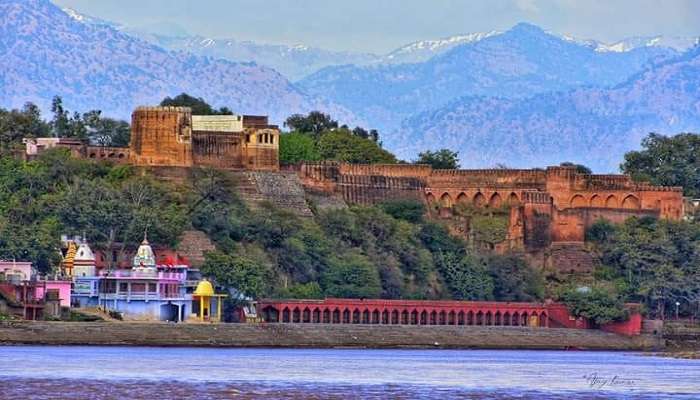
The best time to visit Akhnoor Fort Jammu is during the cooler months, from October to March. The pleasant weather allows for a comfortable exploration of the fort’s historical features and panoramic views of the surrounding landscape. Remember to carry water and wear comfortable shoes, as there may be some uneven terrain within the fort premises.
How To Reach Akhnoor Fort?
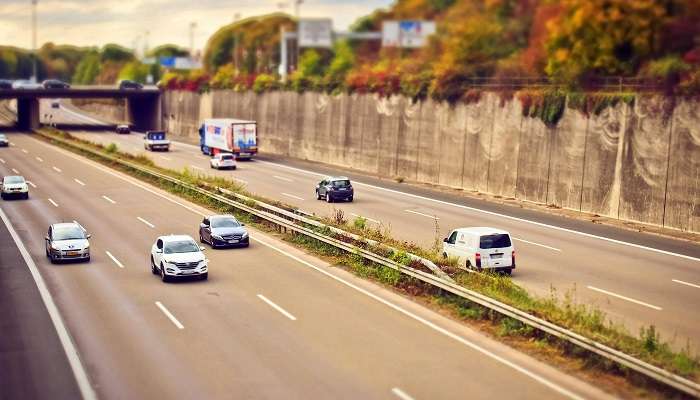
The various ways to reach Akhnoor Fort Jammu are as follows:
-
- Road: Akhnoor Fort is about 30 Km from Jammu’s Bus Stand. You can reach the fort by bus, taxi, or cab.
-
- Air: The nearest airport is Jammu Airport. It is about 35 Km away. You can hire a taxi or catch a bus from the airport to the fort.
-
- Rail: Jammu Tawi railway station in Jammu city is the nearest railway station. It’s well-connected to major Indian cities. You can hire a taxi or take a bus from the station to the fort.
Further Read: Things To Do In Jammu
Akhnoor Fort, with its rich history and captivating architecture, is a must-visit destination in Kashmir. Its grand walls and intricate carvings testify to the region’s past. Whether exploring the fort’s ancient rooms or soaking in the serene ambience, your visit to Akhnoor Fort promises to be an unforgettable journey into history. Want to learn more about Akhnoor Fort? Book your trip to Kashmir and give yourself a chance to dive into the history and enjoy the peaceful atmosphere.
For our editorial codes of conduct and copyright disclaimer, please click here.
Cover Image Credit: Vinayak Razdan For WikiPedia
Frequently Asked Questions About Akhnoor Fort
What is the Akhnoor Fort famous for?
Who is the king of Akhnoor Fort?
While the fort changed hands throughout history, Raja Alam Singh is credited with completing its construction in 1802. It was also the site where Maharaja Ranjit Singh crowned Maharaja Gulab Singh in 1822.
How old is Akhnoor Fort?
The construction of the Akhnoor Fort began in 1762 AD under the supervision of Raja Tegh Singh and was completed by his successor, Raja Alam Singh, in 1802.
On which river is Akhnoor Fort situated?
The Akhnoor Fort is located alongside the Chenab River.
What is the meaning of Akhnoor?
“Akhnoor” is a term in Urdu where ‘noor’ signifies brightness or glow, and ‘aankh’ stands for the eye. Hence, Akhnoor translates to ‘The Eye’s Glow’.
People Also Read:
Tughlaqabad Fort Red Fort Mehrangarh Fort

With a passion for exploring and travelling to the roads long forgotten, experience the world through enthralling stories and adventures. Join me as I share my experiences at some of the world’s most popular tourist destinations and quench that pestering curiosity with something exciting!











